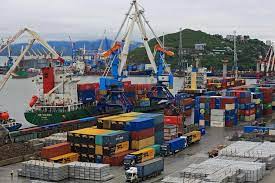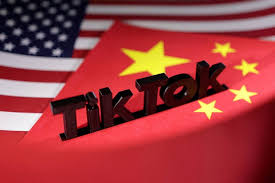Chancay, a fishing hamlet in Peru, welcomed a group of Brazilian farmers and politicians in September. The allure was a brand-new mega port being built by China on the Pacific coast, which was expected to greatly boost trade between China and South America.
China will have a direct entrance to the region rich in resources thanks to the $3.5 billion deep water port, which is scheduled to begin operations later this year. Beijing has surpassed the US as South America’s top trading partner during the past ten years, gobbling up its soy, corn, and copper.
The port will be the first in South America under Chinese sovereignty, and it is mostly held by the Chinese state-owned company Cosco Shipping. The biggest cargo ships may dock there and travel straight to Asia, saving some exporters up to two weeks on their journey.
Beijing and Lima hope that Chancay will develop into a regional centre for copper exports from the Andean country and for soy from western Brazil, which is presently shipped to China via the Panama Canal or by avoiding the Atlantic.
Juan Mathews Salazar, Peru’s trade minister, told reporters that the goal of the Chancay mega port is to make Peru a major port and commercial hub connecting South America and Asia.
The new port, which is a component of China’s ten-year “Belt and Road” initiative, highlights the difficulty that the US and Europe face in trying to offset Beijing’s growing influence in Latin America. China’s ability to negotiate well has given it supporters and increased clout in the financial, technological, and political spheres.
In 2018, full development began at Chancay, about 50 miles (80 kilometres) north of Lima. Workers are currently installing thousands of piles and breakwaters; the Chinese characters on the work signs are written in white on red.
November 2024 is when Chancay’s first phase is expected to be finished. The port may be officially opened by Chinese President Xi Jinping, who is scheduled to visit Peru for an Asia-Pacific Economic Cooperation (APEC) summit later that month, according to a diplomatic source in Lima.
Mario de las Casas, corporate affairs manager for Cosco Shipping, which has a 60% share in the port, explained that it is a component of China’s “new Silk Road.” Glencore holds a stake in the local miner Volcan, which controls the remaining portion.
During his visit to the port, Jose Adriano da Silva, an entrepreneur in farming from the western state of Acre in Brazil, stated that the project would hasten regional development. He claimed that negotiations between authorities from Brazil and Peru were taking place to address issues related to overland transportation.
The government of Peru intends to establish an exclusive economic zone close to the port, while Cosco intends to construct an industrial complex next to Chancay to refine Brazilian meat and grains before exporting them to Asia.
According to Clemente Baena Soares, Brazil’s ambassador to Peru, discussions with authorities are scheduled for early this year to resolve logistical, sanitary, and procedural obstacles at the border to provide easier port access for Brazilian truckers.
“The port of Chancay offers a chance for grain and meat production, particularly from Rondonia, Acre, Mato Grosso, and Amazonas, to reach Asia,” stated Soares, who visited Chancay in September and mentioned the four western Brazilian states.
“Brazilian businesses are delighted with the possibility of not using the Panama Canal to take their goods to Asia.”
He continued by saying that to enhance transportation, money would need to be invested in the Interoceanic Highway, an existing route that crosses the Andes from further south in Peru to Brazil. The much-discussed train link was still in the study stage, he added.
STARK CHANGE
Under previous President Donald Trump, China surpassed the US in trade with South and Central America, even though his government had cautioned the area about the risks of becoming overly close to Beijing. Despite efforts to close the gap, it has gotten wider under President Joe Biden.
Presently, American authorities are adopting a new strategy, contending that the US provides the area with benefits beyond trade, including investment in high-tech sectors.
Senior director for the National Security Council’s Western Hemisphere, Juan Gonzalez, a White House official, told reporters in Buenos Aires that he did not believe that measuring China’s influence through trade was an accurate method.
He said, “We’re confident in our ability to compete with China,” and he urged the countries in the area to make sure trade with Beijing did not come with “political strings attached.”.
Beijing claims that both parties benefit from its trade and investments in Latin America. About 150 nations, including 22 in Latin America, have joined China’s Belt and Road initiative.
The ten-year difference is striking.
Ten years ago, China was the country with somewhat higher commerce with Peru, the second-largest copper producer in the world. The most recent annual data indicates that China now leads by more than $10 billion in bilateral commerce.
In an analysis of ten years’ worth of trade data, what emerged was how China’s infrastructure spending is solidifying its position as South America’s main trading and investment partner, despite the domestic economic slowdown and American admonitions about debt trap diplomacy.
The change is partly pragmatic. China, which is expanding quickly, depends on the Andes in South America for its copper and lithium needs, as well as on the plains of Argentina and Brazil for its grain and soy.
However, its growing trade advantage—roughly $100 billion in South America, according to the most recent yearly data—brings further influence.
Beijing has upgraded its relations to “strategic partnerships” with Uruguay and Colombia in the past year; Colombia is an ally of the United States.
Since assuming office last month, Argentina’s President Javier Milei, who had previously been a harsh critic of China, has modified his position to recognize Beijing’s significance to the country’s struggling economy.
It is the largest purchaser of cattle and soy from Argentina and possesses an $18 billion currency exchange line with the nation; the cash-strapped government of Argentina has utilized this line to settle its debt, including obligations to the International Monetary Fund (IMF).
After Milei’s inauguration, the Chinese ambassador in Colombia posted on social networking site X, saying, “The last thing our dear Argentine friends need in these challenging times is to lose the support of an important partner like China.”
“POINT OF LEVERAGE”
Due to an increase in copper exports, Peru’s trade with China doubled over the past ten years to reach $33 billion in 2022, while its trade with the US remained stagnant. Over the same period, China has made over $24 billion in investments in Peruvian mines, the electricity system, transportation, and hydroelectric power generation.
Government data indicates that during the first eleven months of last year, exports to China increased by 9.3%, outpacing the 5.3% rise of exports to the United States. Peru’s trade deficit with the US is $1.3 billion, while its trade surplus with China is $9.4 billion.
November saw the meeting of China’s Xi and Peru’s President Dina Boluarte in San Francisco at the Asia-Pacific Economic Cooperation (APEC) event. During their conversation, Boluarte said that the Chancay port had provided a “significant boost to free trade and new Chinese investments.”
That followed an unpleasant impromptu press conference with Biden in Washington that was not treated as a formal bilateral meeting.
A former State Department official and White House adviser, Eric Farnsworth is now a Latin America expert at the Council of the Americas and the Americas Society. “China is taking advantage of our absence and that’s a real problem,” Farnsworth said.
He claimed that the port established a “point of leverage” for China in the area and strengthened its stronghold in Peru.
Relative to the Chinese immigration surge that came to Peru two centuries before, when migrants came as cotton workers or to establish “chifas,” or Chinese food stores, two regional officials said it also indicated a more powerful and ambitious China, sometimes supported by substantial resources.
Former Peruvian ambassador to China Juan Carlos Capuñay observed, “Now business executives or bankers come, with big projects tucked under their belts.”
“FUTURE FIGHTING GROUND FOR MINERALS”
China hasn’t always had it its way. China’s bad debts have increased dramatically, and the Belt and Road programme has encountered resistance in Asia and Europe (Italy just withdrew from the project). Projects in Latin America, ranging from Argentina to Venezuela, have encountered delays.
The Chancay port would only be viable if regional infrastructure, including roads and trains, improved to enable products to get there, particularly crops from Brazil, diplomats and trade experts said.
Currently, the Interocean Highway, which was constructed more than ten years ago and is a little-traveled road corridor spanning 2,600 kilometres (1,616 miles) in five sections, connects Brazil’s state of Acre with the Pacific Coast in southern Peru.
The project’s viability is highly dependent on a lack of regional links, which is the current problem, according to Fernando Reyes Matta, a former Chilean ambassador to China.
Nevertheless, a number of the respondents stated that despite these obstacles, China’s ascent in South America was strengthening since the region was in dire need of funding and foreign exchange.
According to a senior European diplomat stationed in South America, the United States finds it difficult to “strong arm” local governments to reject Chinese money because of the significant financing shortfall for infrastructure in the area.
In the meantime, South America’s resources—such as grains, lithium, and copper—had drawn attention from all around the world.
“Latin America has become a new battleground for those minerals between the United States, Europe and China,” he stated.


















